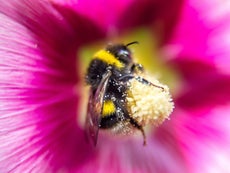
Many of us grew up in the Tupperware age. Our parents’ fridges were full of plastic food storage containers, and we even kept plastic margarine tubs for storing leftovers!
A lot has changed since then, and more and more research is showing that plastic leaches chemicals into our food and drinks, which can harm our health. Plastics like Bisphenol A (BPA) and Bisphenol S (BPS) have been shown to have hormone-mimicking, estrogenic properties. BPA has even been linked to breast cancer tumors. Unfortunately this seems to happen quite a lot, a new fabulous product is introduced and as the years go on and the research that should have taken place before being sold to the public, takes place they find that it is not so wonderful after all.While BPA has been taken out of many plastics due to consumer demand, it has been routinely replaced with BPS, which may be even more toxic. Studies show that it’s now found in 81% of blood tested and that it can lead to ailments such as diabetes, obesity, asthma, birth defects, and cancer. Just because something is labeled BPA-free doesn’t mean it’s safe.
Safest: Glass Storage Containers
If you’ve been working on your green resolutions this year, choosing safer food storage containers should be on your list. The safest choice for food storage is glass. A couple of years ago, glass food storage containers were hard to come by and expensive. Prices have come down a lot and major manufacturers are adding glass storage to their lines, so it’s much more accessible.
Look for brands that are made in the Europe or the United States because some glass imported from China has been shown to contain lead or cadmium (especially if there is paint or enamel involved). Two brands include Pyrex and Anchor Hocking. Duralex is made in France and Lifefactory is made in Europe, so they should also be safe. Both Ball and Kerr canning jars are made in the U.S. and are a great choice for food storage as well. You can check your existing glass for lead with LeadCheck Swabs.
Safer Than Plastic: Stainless Steel or Silicone
If you don’t want to make the switch to glass but still want something that’s considered safer than plastic, you can choose 304-grade stainless steel or silicone. Neither of these materials should leach chemicals into your food.
Avoid High-Risk Plastics
While it’s best to avoid plastic food storage containers altogether, there are safer choices if you don’t have the means to make the switch yet. If you look at the bottom of your plastic food storage containers and they have a 2, 4, or 5, those are generally recognized as safe for food and drink. If any of your containers have a 3, 6, or 7, those should be disposed of because they are considered high-risk plastics.
If you’re going to use one of the safer plastics, it’s best not to store acidic or greasy foods in them. Also be sure to throw out any plastic containers that are scratched up, worn badly, or are cloudy. And don’t use them in the microwave or dishwasher for improved safety.
If you need to dispose of plastic containers it is best to take them to the local recycling station, I take all my bits and bobs to the one on the Poligono in Ciutadella, they have special containers in which you can leave them.
The blog song for today is: " Duchess" by Genesis
TTFN





 As you know I have been looking for ways to avoid buying stuff in plastic containers and have also been searching for ways to make my own products. I have come across an easy recipe for Fabric conditioner, which I have tried and it does work! This means that I can reuse any plastic bottle over and over again, terrific for the planet, and also for saving money!
As you know I have been looking for ways to avoid buying stuff in plastic containers and have also been searching for ways to make my own products. I have come across an easy recipe for Fabric conditioner, which I have tried and it does work! This means that I can reuse any plastic bottle over and over again, terrific for the planet, and also for saving money! 



